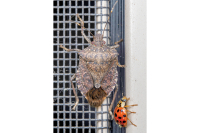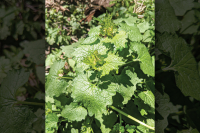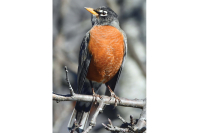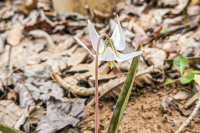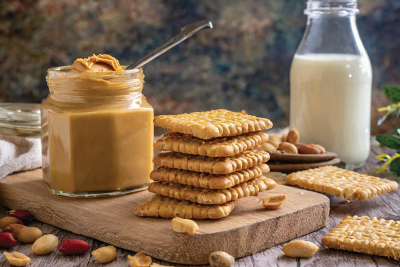Notes from a Plant Nerd: The winter forest
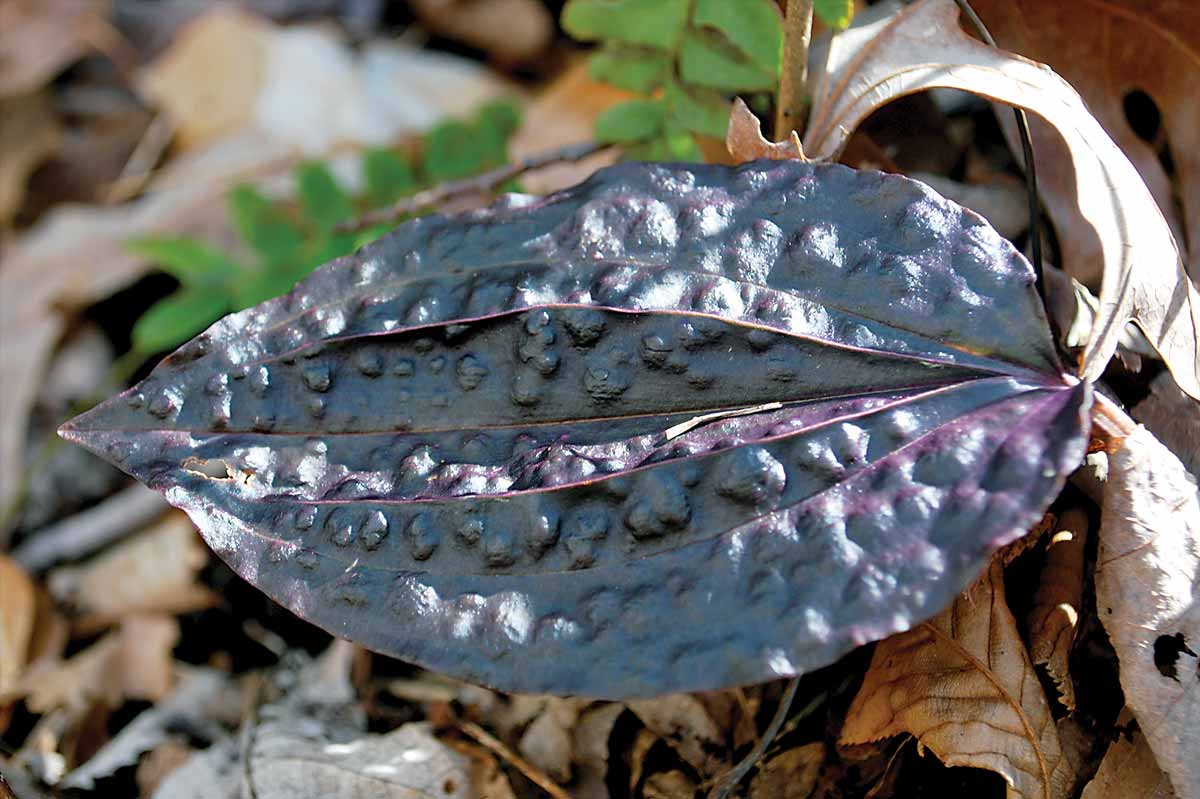 The winter leaf of the crane-fly orchid is purple underneath and green or purple on top, with blisters or bumps all over it. Adam Bigelow photo
The winter leaf of the crane-fly orchid is purple underneath and green or purple on top, with blisters or bumps all over it. Adam Bigelow photo
I love walking in the woods in the wintertime. Sure, there aren’t any wildflowers blooming, but there are no mosquitos to swat away, no flies or ants to bug your lunch, and no snakes to startle your path either. The long-range views visible through leafless trees give a fresh perspective to familiar trails as all the ridges and hollows are outlined starkly on the hillsides, showing evidence of water and its effect through millions of years of erosion.
And while I certainly miss the wildflowers lining the trails, there is plenty of botanical interest lying among the duff of fallen leaves. There are three kinds of native orchids whose winter leaves cause people to reach out with identification questions throughout the winter months. The rattlesnake plantain orchid (Goodyera pubescence) has light green leaves with a white variegation forming a pattern that reminds some of snakeskin. These evergreen leaves form a basal rosette, a botanical term describing leaves growing in a radiating pattern at the base of the plant, along the ground. You can often find the remnant, dried seed stalk from last year’s blooms, which is said to resemble the tail of a rattlesnake, sticking up from the middle of the rosette.
The other two orchids whose leaves are commonly seen on a winter walk in the woods are the crane-fly orchid (Tipularia discolor) and puttyroot (Aplectrum hyemale) which is also called the Adam-and-Eve orchid, a name that I kind of like. Both of these orchids produce a single winter leaf in the late fall, whose job is to gather sunlight all winter long, storing up energy in the root. The winter leaf then dies away before the orchid flowers shoot up in the late spring and summer to bloom. The leaves and flowers of these species never see each other, as they alternate their growing seasons year after year.
These two orchids are often found growing in similar conditions in the woods, and are sometimes confused for each other, even as their differences are striking. Puttyroot has a leaf that is longer than wide, light green with greenish-white pinstripes running the entire length of the leaf. The crane-fly orchid’s leaf is shorter than puttyroot, and almost as wide as it is long. Crane-fly’s winter leaf is usually green but can sometimes express as purple and has what looks to be blisters or bumps all along the leaf. The underside of the crane-fly leaf is also purple. The darker color retains more heat from the winter sun, helping this plant to avoid freezing on the coldest nights. The winter leaves of these two orchids are often easier to spot than are their flowering counterparts in the warmer months. If you want to remember to look for them, I recommend marking the spot with a flag or rock, so it is easier to find when in bloom.
Another green leaf found in the winter forest is the evergreen wild-ginger (Hexastylis spp.) The common name for this plant comes from the strong aroma given off by the leaves and roots. The roots smell like ginger, and the leaves give off a scent reminiscent of root beer. However, it is not recommended to ingest these plants, as they can have toxic components in leaf and root. These low-growing plants have heart shaped leaves, and in the spring, their flowers bloom even lower, laying on the ground so that you have to part the leaves and look underneath to spot them.
There is so much botanical winter interest to keep me happy until the flowers come back. From evergreen ferns, trees and shrubs to the many upon many different forms, colors and species of moss, lichen and liverworts, there is no reason to stay huddled up by the fire during this time. So, as you are walking in the woods searching out spring’s return, don’t forget to pay attention to the many beautiful forms and patterns that make up the winter forest. And know that it won’t be long, and the wildflowers will return. I promise.
(Adam Bigelow lives in Cullowhee and leads weekly wildflower walks and ecotours through Bigelow’s Botanical Excursions. This email address is being protected from spambots. You need JavaScript enabled to view it..)

